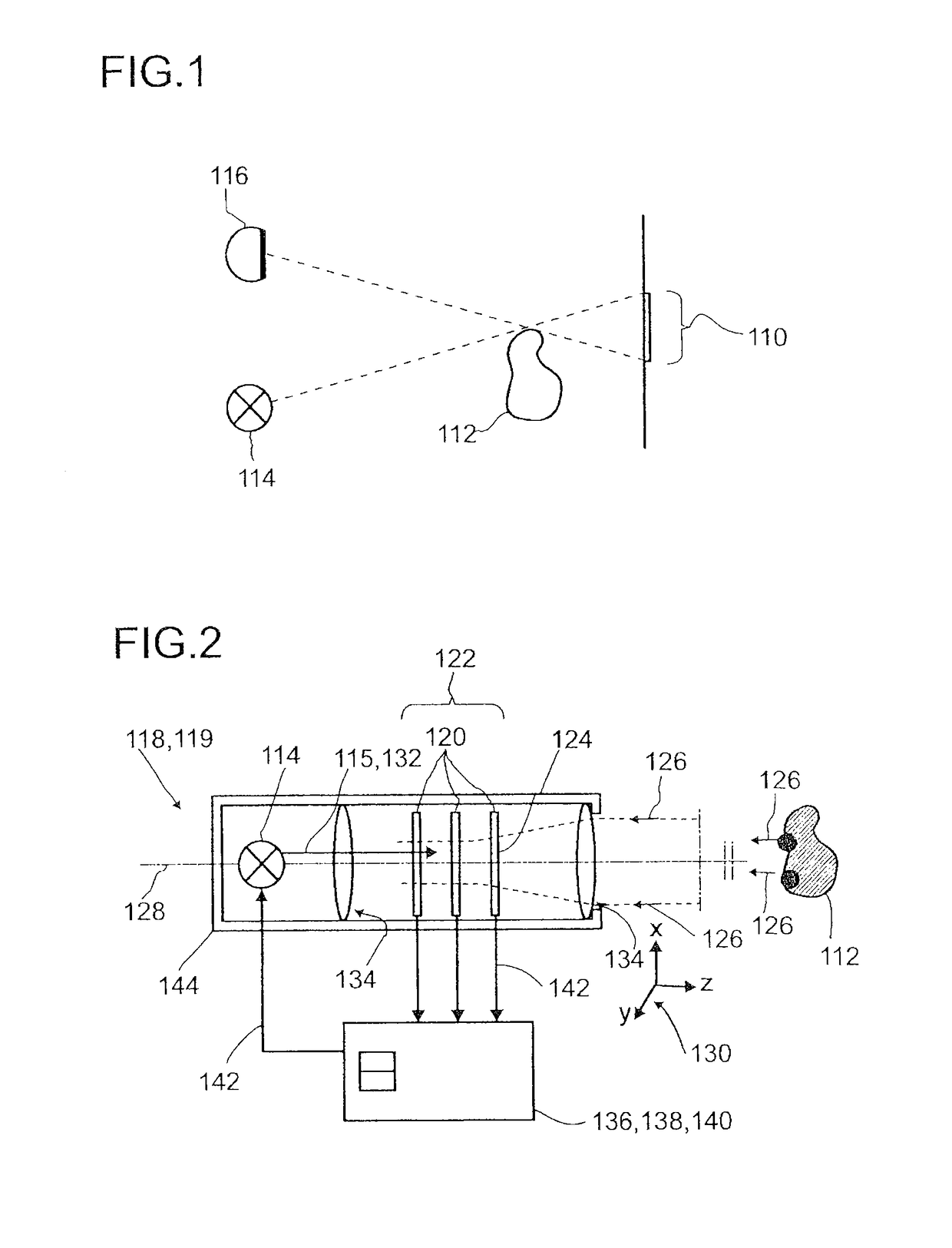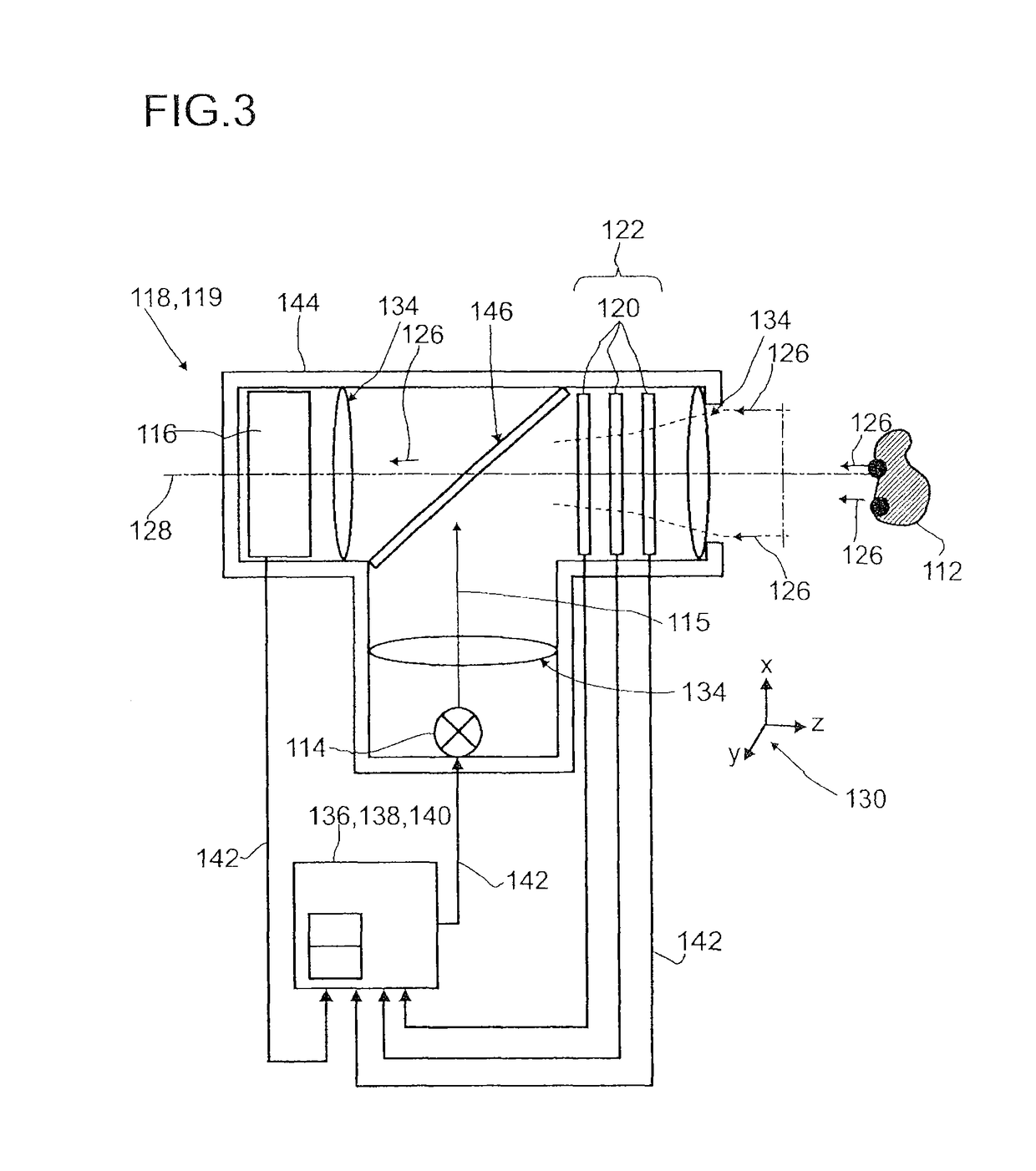Detector for determining a position of at least one object
a technology of detector and position, applied in the direction of direction/deviation determining electromagnetic system, using reradiation, instruments, etc., can solve the problems of inaccuracy of distance measurement and objects may cause shadows, and achieve the effect of sufficient electrical conductivity
- Summary
- Abstract
- Description
- Claims
- Application Information
AI Technical Summary
Benefits of technology
Problems solved by technology
Method used
Image
Examples
Embodiment Construction
[0357]In FIG. 1, the occurrence of a shadow 110 in the determination of a position of at least one object 112 using an illumination source 114 and an imaging device 116 is depicted. The imaging device 116 may be arranged displaced from an optical axis of the illumination source 114. A light beam emitted by the illumination source 114 may illuminate a point and / or a region of the object 112. However, the displacement of the illumination 114 and the imaging device 116 may cause a shadow 110. The shadow 110 may be a region which in principle can be viewed by the imaging device 116, but which is not illuminated by the illumination source 114. In addition, a position of the shadow 110 may depend on the relative arrangement of the illumination source 114 and the imaging device 116.
[0358]FIG. 2 shows an embodiment of a detector 118 according to the present invention, for determining a position of at least one object 112. The detector 118 in this embodiment or other embodiments of the prese...
PUM
 Login to View More
Login to View More Abstract
Description
Claims
Application Information
 Login to View More
Login to View More - R&D
- Intellectual Property
- Life Sciences
- Materials
- Tech Scout
- Unparalleled Data Quality
- Higher Quality Content
- 60% Fewer Hallucinations
Browse by: Latest US Patents, China's latest patents, Technical Efficacy Thesaurus, Application Domain, Technology Topic, Popular Technical Reports.
© 2025 PatSnap. All rights reserved.Legal|Privacy policy|Modern Slavery Act Transparency Statement|Sitemap|About US| Contact US: help@patsnap.com



